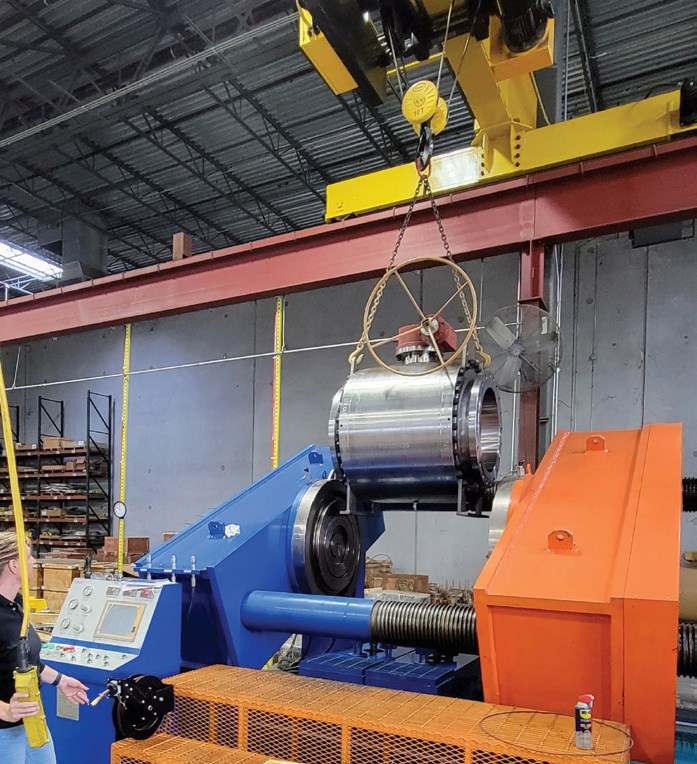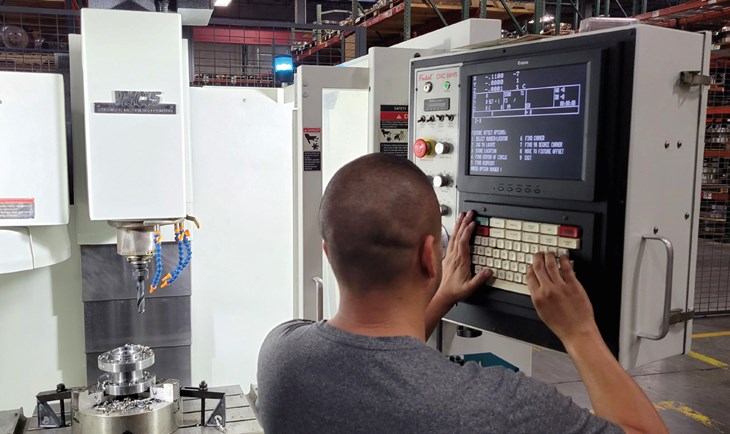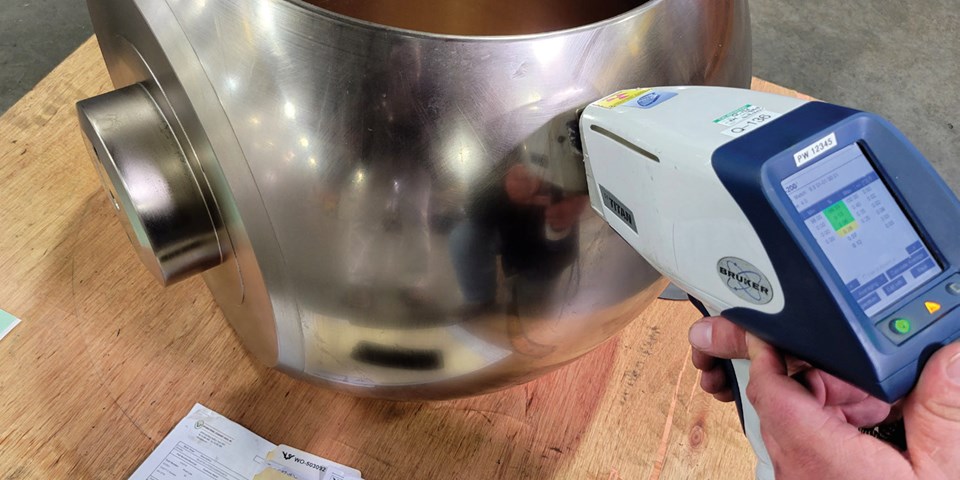Valve World Americas had the opportunity to speak with Michael O’Quinn, President of ISV, about the process of creating quality designs, what impacts the total cost of ownership of a valve, and what can be done to lower those costs.
By Brittani Schroeder
Creating Quality Designs and Systems
When beginning the design process, a manufacturer needs to first identify the market or market requirements for the product. “It starts with one question: Why are we making the valve?” said Michael O’Quinn. Once this question has been answered, an engineering review will be conducted where they will identify the appropriate industry standard for the product – for example, API 6D, API 600, API 609, ASME B16.34, etc. – along with the input requirements, output requirements, and finally, the design planning. “The design plan will include a deliverable action plan, with responsibilities for the engineering, quality, and production departments. Further reviews will also be conducted as needed to solidify the plans before production begins.”
Following the review process, calculations are performed to determine Cv values, torques, bolt loads, stress, wall thicknesses, corrosion permission & allowance, and finite element analysis (FEA) is conducted on critical parts. “The engineering team runs through a complete design phase including calculations to create a design file. That design file is then turned into a prototype. The complete design process can take several months.” Verification is then conducted to prove outputs match inputs, for example the initial drawings meet or exceed industry design standards and/or customer requirements.
Next is validation, where the valves are subject to extensive supplemental testing, such as pressure testing, dimensional inspection, visual inspection, and type testing (ie. Torque, anti-static, fire-safe testing, fugitive emissions, cryogenic testing) are critical steps in this stage. One of these challenges that API 6D addresses is explosive decompression of the elastomeric materials. “When you have an elastomer o-ring in gas service in ASME class 600 or higher pressures that is rapidly removed from line pressure the o-ring design must overcome possible explosive decompression damage. This is where the elastomer material becomes blistered or torn by permeated media releasing itself from the o-ring material.”
On a rare occasion, problems can occur throughout this design and manufacturing process, and the quality of the product could suffer because of it. “One of the biggest mistakes a manufacturer could make during this process would be underestimating the positive benefits of a consistent QMS implementation,” stated O’Quinn. “Another mistake could occur if the manufacturer inadequately applies the proper materials during the design and manufacturing process.”
Proper Testing
Pressure test machines should be carefully selected to achieve the most accurate test result. The test machines should be designed to achieve a long service life, while protecting the product being tested and maintaining testing integrity. At ISV, these test machines are configured to test valves with a variety of end connections: flanged, butt weld, threaded, socket-weld, male and female ends or special hub ends and can test valves from sizes 1/4” to 42”, pressure classes up to 2,500.
In order to maintain precise results, testing equipment – including gauges – are regularly monitored, serialized, and data is recorded in the calibration database. This database enables the company to track calibration history to the uniquely serialized valve that is produced and tested. After successful hydrostatic testing is completed the test fluid is drained and dried with compressed air. PMI is performed as a norm on alloy material components, including all grades of stainless steel. PMI test data is linked to the valve serial number. Other testing is frequently conducted based on valve design, materials, or customer specifications such as: M/P, L/P, U/T, R/T, chart recorded long duration testing, high pressure gas test (below ground bunker is utilized in-house.

Quality Factors an End User Should Consider when Selecting a Valve
As ISV would say, “there are a number of key factors that every end user should consider when selecting products, manufacturers, etc., and deciding whether or not the products they are purchasing meet or exceed an established quality standard.” End users should consider:
1. The quality level of valve engineering and manufacturing. Is the valve manufacturer certified to industry QMS standards, such as ISO 9001, API Q1, etc.? Getting to know the manufacturers of the products, or product types frequently purchased or utilized, can be valuable in assessing the overall product quality of valves being purchased.
2. Assess the valve manufacturer’s knowledge and ability to control its own supply chain.
3. Does the manufacturer perform annual sub-supplier manufacturing shop visits, surveys, quality audits, or obtain QMS certificate updates annually?
4. Does the manufacturer serialize and pressure test 100% quantitatively every valve shipped, which provides reliable traceability over time?
5. Maintaining an approved manufacturer’s list (AML) for the valve brands they purchase. Consideration can be given to requesting an API RP591 examination report as a means of evaluating a current or potential valve manufacturer’s product for quality assessment.
6. Has the valve product been type-tested and certified to industry recognized product design and quality related standards, such as API fire safe standards and fugitive emissions standards?
7. The engineering and technician resources that the manufacturer has readily available to assist with any product-related issues over the life of the valve.
8. Parts and service availability from the valve manufacturer.
Determining the Total Cost of Ownership of a Valve
A user’s understanding of the quality and service viability of a valve product source is an important first step in controlling the overall total cost of ownership (TCO) of an industrial valve.
TCO is not only based on the initial purchase price of the valve unit upon delivery, but is impacted by a number of costs that may often be overlooked during the usage life throughout purchasing, installation, and maintenance. These costs could include:
• The cost at installation, which could be affected by improper or inaccurate technical information and documentation delays.
• The cost at start-up/commissioning, which can vary widely if poor quality products are installed.
• Maintenance costs, as some valves may be problematic, requiring excessive maintenance attention, resources, and possible downtime costs, depending on the availability of repair parts, product technical information and support.
• The maintenance downtime impact on a plant or operations’ productivity. Some valves are very critical to the entire operation of a plant or piping system, such as an emergency shutdown valve or main line pipeline valve. Downtime of this type of valve during an unscheduled maintenance issue usually has a direct impact on the time-based-productivity of piping systems.
The supply chain can also impact the TCO of a valve. If a supplier has long lead times, or a user has a limited number of approved suppliers, this could negatively impact the user’s production, leading to longer downtimes. “The product, service quality, and availability are really important factors for the user to consider. Maintaining product quality all the way from the manufacturer’s shop floor through the delivery process is something to focus on too. A damaged product upon delivery usually has significant impact in delaying construction implementation, which in turn makes the TCO of the valve go up,” said O’Quinn.

How Can the Total Cost of Ownership Be Lowered?
There are a few ways that the TCO of a valve can be reduced from the manufacturing standpoint. These include producing and delivering consistent quality products. Also important is providing reliable technical documentation and product specifications with fast engineering support to users for service applications, start-up considerations and maintenance/repair concerns.
ISV maintains a robust quality management system that is ISO 9001 and API Q1 certified. All approved subsuppliers are frequently surveyed and audited. ISV has an active engineering and quality staff in Stafford, TX that are fully engaged in the onsite manufacturing processes.
These are a few of the key points that they believe should have a positive impact on lowering the total cost of ownership:
• Consistent high quality production.
• Performing 100% Hydro Testing and cycle testing of all valves to industry applicable test standards.
• Use of reliable, high-quality materials for o-rings, gaskets, and packing.
• Maintaining component traceability from beginning to end, for a minimum of 10 years.
• Performing frequent NDE (non-destructive examinations) such as PMI on all alloy materials.
• Maintaining availability of replacement parts for quick response.
• Employing upgraded materials such as higher mill of nickel plating on key components.
• Standardizing on frequently requested features that would minimize erroneous installations of inferior/incorrect materials or features.
• Maintaining highly trained assembly technicians to provide consistent quality throughout production.
Summary
A lot of time and effort goes into creating a high-quality valve – from identifying the market’s need for a new valve, to the valve design, validation, and testing. There are many factors end users should consider in order to properly select a high quality product from a trusted manufacturer. There are also many ways in which a manufacturer could lower the total cost of ownership of a valve, thereby helping the end users in the long run.


